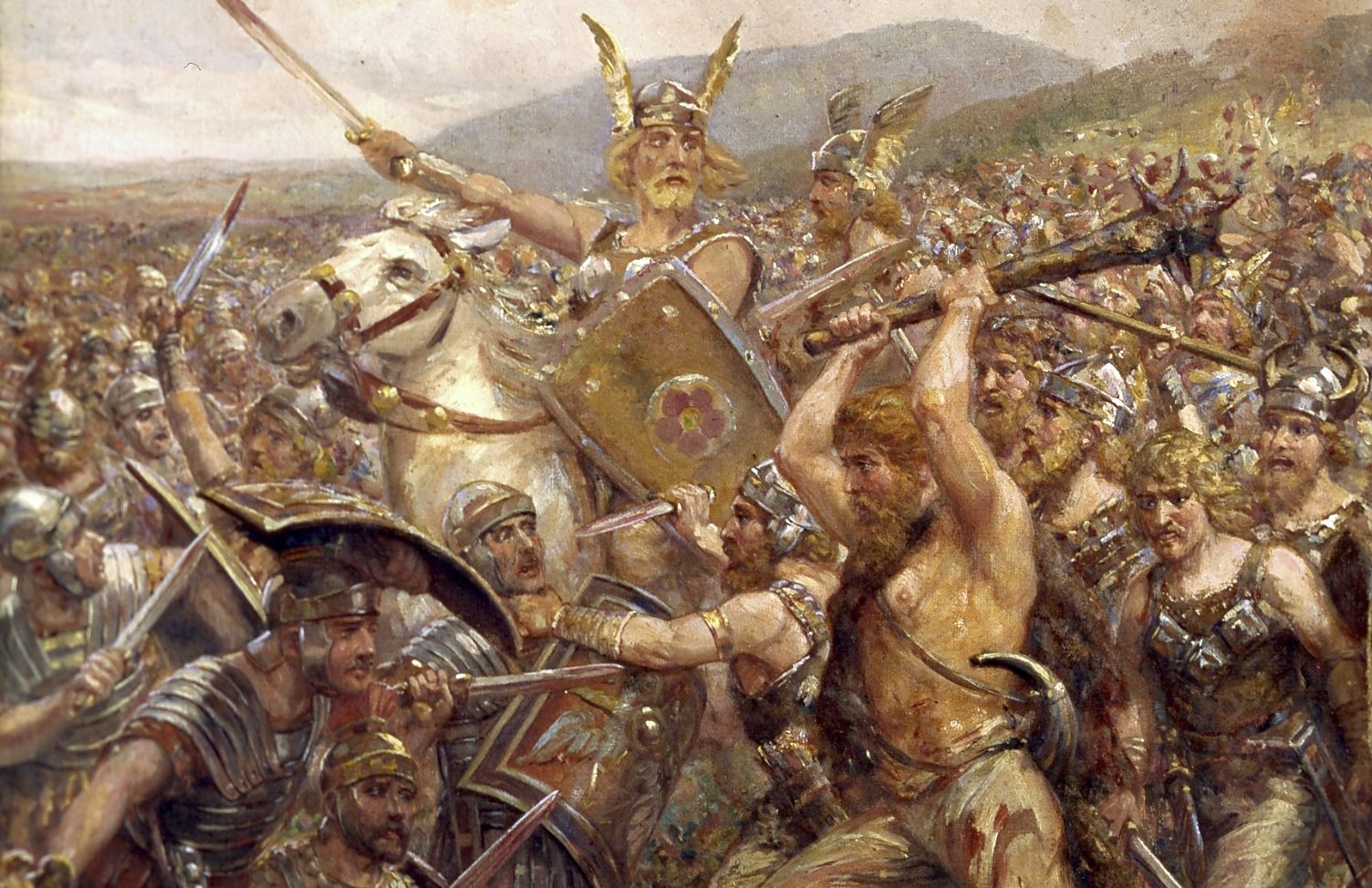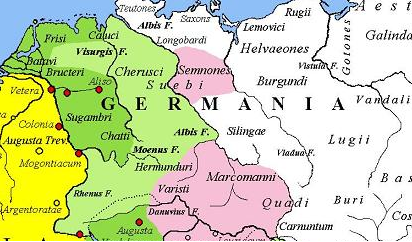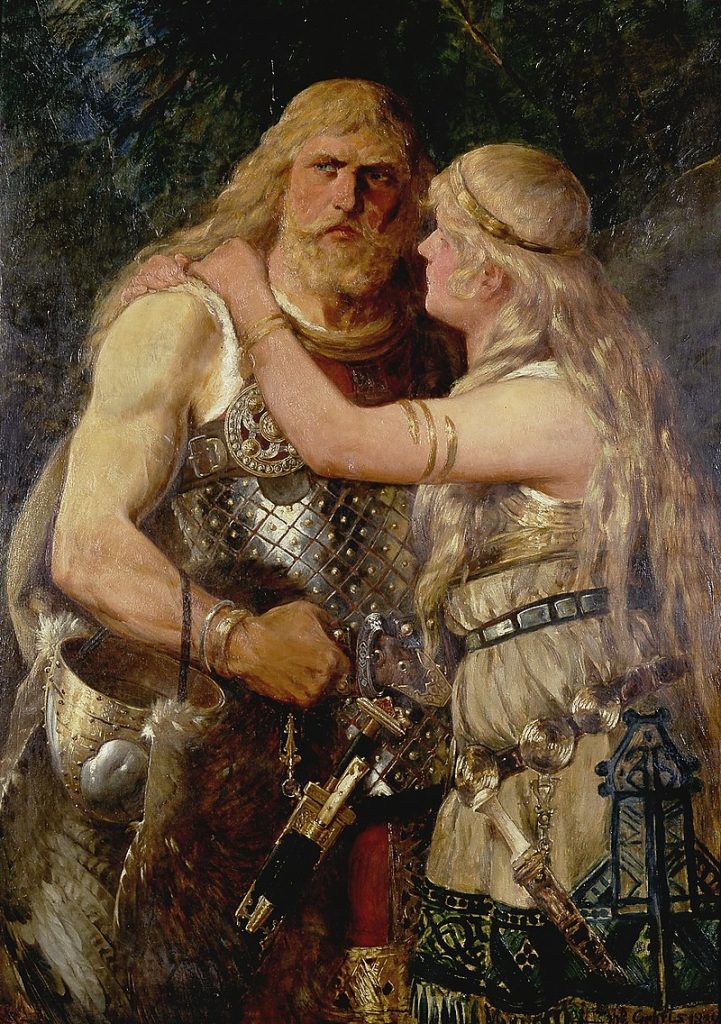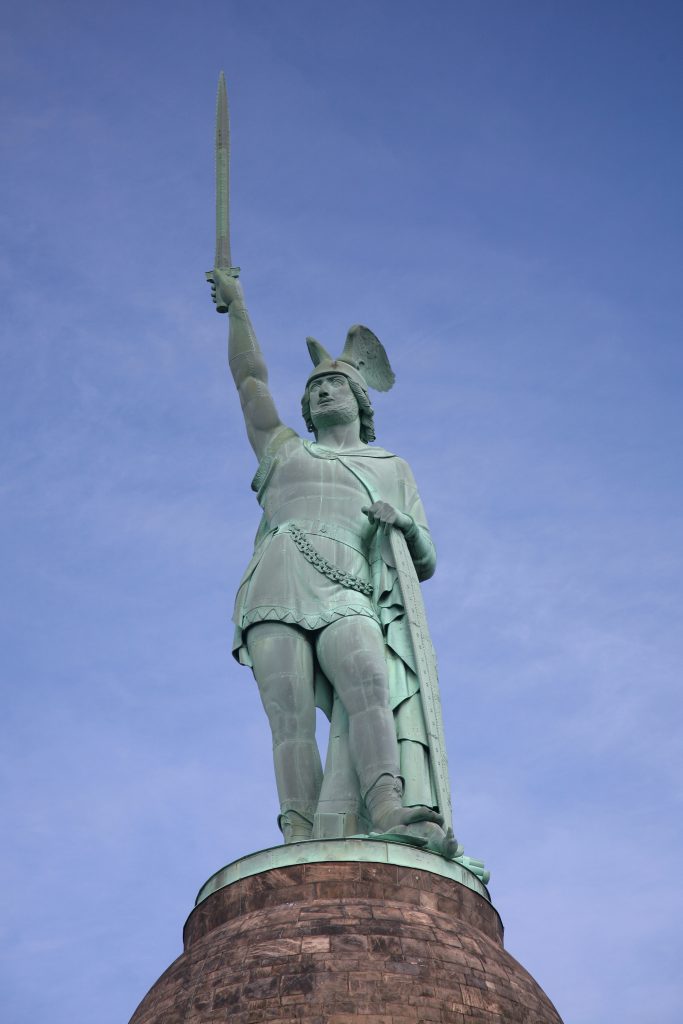
Germanic warriors storm the field, Battle of the Teutoburg Forest. Artwork by Otto Albert Koch, 1909
His Latin name was Arminius but on the southern plains of Minnesota, in the small town of New Ulm, he is known as ‘Hermann the German.’ The historic legacy of this Germanic chieftain spanning the Atlantic World was attained in 9AD after he led an alliance of tribes to victory against the mighty Roman Army at the Battle of the Teutoburg Forest.

Rome’s stunning defeat, which permanently stymied its efforts to push its boundaries beyond the Rhine, was chronicled in the Annals of Tacitus, who, according to Herbert W. Benario in 2004, called Arminius the “liberator haud dubie Germaniae, a man unbeaten in war.”1 Although scholars have debated the battle’s exact location, which is generally believed to be located somewhere near the Hills of Weihen in Lower Saxony, the historical consensus is that the victory forced the Romans to come to terms with their strategic limitations – portending the eventual demise of their expansionist system as northern tribes increased their power at the empire’s expense. Tacitus also wrote how to Roman general Germanicus, a few years later, surveyed the aftermath of the forested battleground strewn with the unburied remains of more than 15,000 Roman soldiers:
The army marched through a gloomy solitude. The place presented an awful spectacle, and the memory of a tragical event increased the horror of the scene… The extent of the ground… still distinctly seen, left no doubt but that the whole was the work of the three legions. Farther on were traced the ruins of a rampart, and the hollow of a ditch wellnigh filled up. This was supposed to be the spot where the few who escaped the general massacre made their last effort, and perished in the attempt. The plains around were white with bones, in some places thinly scattered, in others lying in heaps, as the men happened to fall in fight, or in a body resisted to the last. Fragments of javelins, and the limbs of horses, lay scattered about the field. Human skulls were seen on the trunks of trees. In the adjacent woods stood the savage altars where the tribunes and principal centurions were offered up a sacrifice with barbarous rites. Some of the soldiers who survived that dreadful day, and afterwards broke their chains, related circumstantially several particulars. ‘Here the commanders of the legions were put to the sword: on that spot the eagles were seized… Yonder mound was the tribunal from which Arminius harangued his countrymen: here he fixed his gibbets; there he dug the funeral trenches; and in that quarter he offered every mark of scorn and insolence to the colors and the Roman eagles.’2

‘An Historical Hero’
Benario notes that in 1515 the “editio princeps” of the early volumes of Tacitus’ Annals were published, prompting pro-German scholars to hail Arminius as a mythological liberator who fought against the ancient world’s greatest military empire. “At last Germans of modern times had an historical hero,” Benario writes, “who had maintained the freedom of the Germans (as naively interpreted) against the rapacious Italians of the South. The ancient struggle between Roman and German, between South and North, served as a paradigm for the present day.” This theme extended into the romantic nineteenth century, when German nationalists lauded his victory as a cornerstone of Teutonic identity – giving him the name ‘Hermann,’ which meant ‘Warrior’ or ‘Man of War.’3
‘Modern Idea of Freedom’
In 1838, Germans began constructing a large statue known as the Hermannsdenkmal, or ‘Hermann Monument,’ near what was then believed to be the battle site. In 1888, thirteen years after that statue was completed in Germany, public officials and members of the Germanic-American fraternal order of the Sons of Hermann, in the town of New Ulm, Minnesota, laid the cornerstone of the Hermann Heights Monument overlooking the Minnesota River Valley.

When it was dedicated in front of thousands in late September of 1897, the 27-foot Arminius was one of the largest copper statues in the United States, and stood atop a 70-foot monument making its total height more than 100 feet. Governor David M. Clough gave an address, noting that New Ulm was “over 4,000 miles from the scenes of the conflict…. The date of this dedication is fifteen times as far remote in years from the date of that old victory, as in the Battle of Bunker Hill.” Clough posed the question: “Why then should citizens of this republican United States, at the close of the nineteenth century erect this pile of stone to keep alive the story of a battle in other lands at the beginning of the first century of our era?” For the citizens of New Ulm and those who traveled hundreds of miles to see the monument, the answer was obvious. Arminius, or Hermann the German, represented something both universal and American:
The best part of our civilization is not our wealth, nor even our book knowledge. It is the growing spirit of freedom, of equality, of universal brotherhood throughout our land and throughout the world. It is the idea expressed by Lincoln at Gettysburg of a government of the people, by the people and for the people. It is a government with no privileged classes, no aristocracy, either by birth, wealth or station in life… But Hermann, when he formed the German confederacy and broke the Roman power on the farther side of the Rhine, was an exponent of the modern idea of freedom. …We are a free people, not merely nor mainly because our fathers were ready to dare and to die at Bunker Hill and Monmouth, in Valley Forge and before Yorktown, but also because their fathers in their turn were ready to resist the aggressions of Charles and John on Marston Moor… The story of one brave deed for liberty does not suffice to feed the hunger of the human race for freedom, we must tell our children and our children’s children the story of the heroes of every land and every time who have given their lives, that liberty and fraternity and equality might survive among men. No better story of liberty loving can be found than that of old Hermann whose victory over the arms of tyranny is commemorated by this monument that stands before us.4
1 Herbert W. Benario, “Arminius into Hermann: History into Legend,” Greece & Rome 51, no. 1 (2004), 85.
2 Arthur Murphy, trans., Tacitus, vol. 1 (London: Henry Colburn and Richard Bentley, 1830), 78–9.
3 Herbert W. Benario, “Arminius into Hermann: History into Legend,” Greece & Rome 51, no. 1 (2004), 85.
4 New Ulm Review, Sept. 29, 1897; St. Paul Globe, Sept. 26, 1897.
About the author
Based in South Korea since 2008, Benjamin J. Swenson is a professor at Hoseo University in Asan. He holds a PhD from Pompeu Fabra University in Barcelona, Spain, where his dissertation addressed 19th-century Euro-American military history. His work has appeared in the Journal of Military History, and his most recent, The Dawn of Guerrilla Warfare (2023), was published by Pen & Sword. Its follow up, Wars of the Mexican Gulf, will be published in 2024. His hobbies include Viking sagas and chess.
